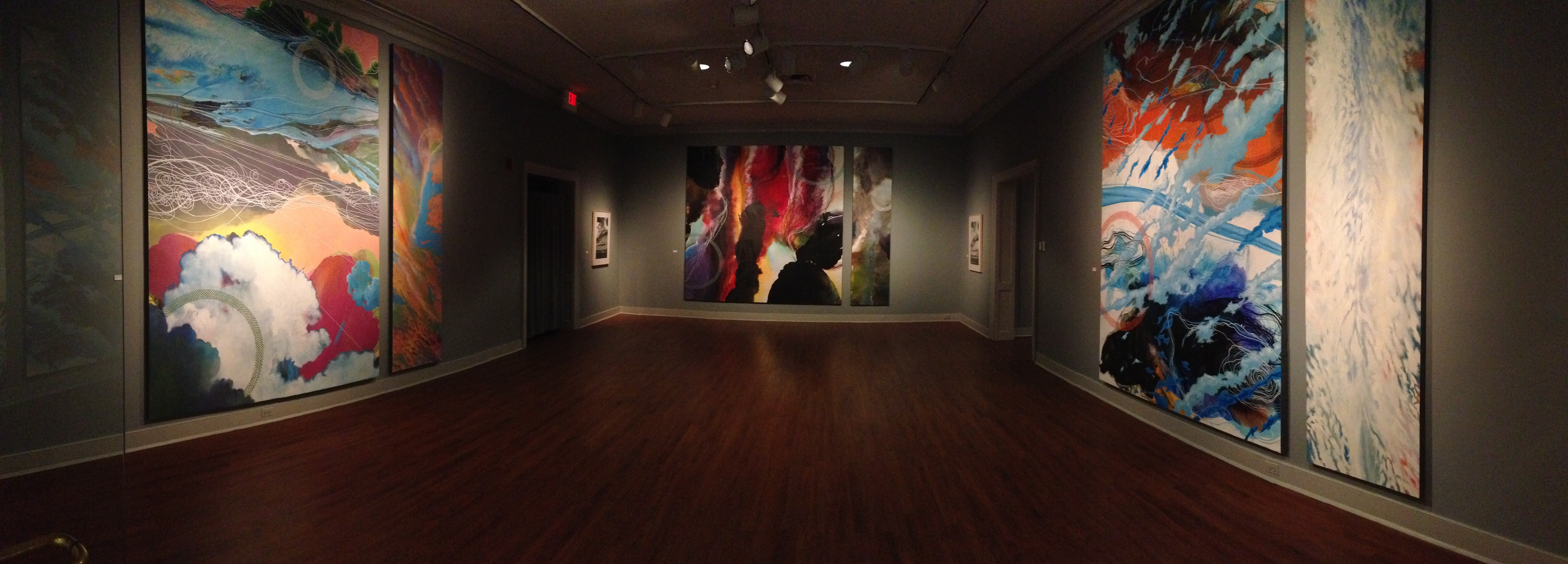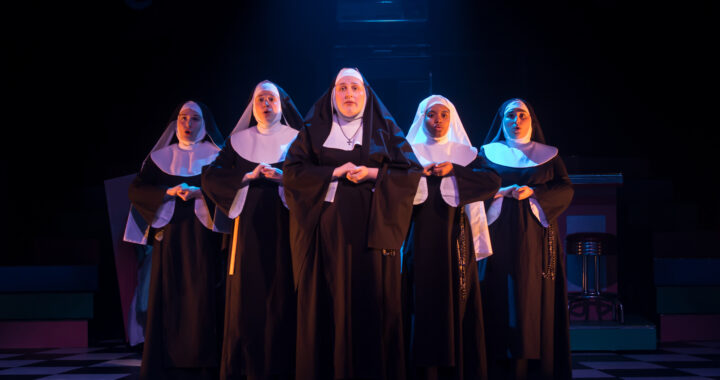Joseph DiBella’s farewell exhibit breathes new life into familiar meduim
3 min read
Caroline Trabucco / The Blue & Gray Press
By CRISA YOUNG
“Breath That Fades Away,” serves as Professor DiBella’s farewell exhibit as a retiring faculty member of the University of Mary Washington.
DiBella will be retiring at the end of the 2016 spring semester, after 39 years with UMW.
DiBella has been teaching since 1977, and currently teaches Drawing I, Intermediate Drawing as well as Painting I and II.
From the threshold of UMW’s Ridderhof Martin Gallery, visitors are met with a glimpse of DiBella’s daunting display of canvas, which stretches from the floor to ceiling.
The exhibit begins with the series named, “Temporalae,” showing the multiple perspectives of what appears to be strips of ribbon floating through an airy spectrum.
Pieces flanking the entrance and back corners, deemed “Blind Run,” are reflections and replications of each other. The colored pair, mirrored, show an introspective figure traveling across an interpretive landscape with swirls dancing through the skies above.
The last two are made of dry and wet charcoal, showing vastly different tones of the same plane, one cloaked in darkness, the other lighter and easier to see through as the traveler makes their way.
In a side area, pieces mimic the gallery’s title, “Breath That Fades,” each holding clouds in different perspectives and hues, perhaps implying the sun’s rise and fall through time.
Across the second half of the room the perspective is rotated sideways, throwing off the familiarity the viewer has gained. The only element that gives a semblance of viewpoint is the recurring dotted circles, the varying sizes giving the impression of distance throughout the landscapes.
The final pieces, “Vapor and Clouds,” “Vapor and Fire” and “Vapor and Wind,” are the main focus of the exhibit, due to their sheer size and eye catching subject matter.
Each is adorned with a counterpart, leaner in width but matching in height. The first in the series embodies sunlight, streaming morning rays through dancing clouds.
The next captures the playfulness of a burning flame with contrasts of light and dark, with escaping lines wiping throughout the piece like smoke against a backdrop of night. The last creation is a barrage of clouds with motion so clear they stream across the horizon.
These pieces all seem to personify the idea of time through the clouds on landscapes. When moving throughout the gallery, the idea of a beginning and ending shines through the multitude of series.
In DiBella’s pieces, the use of clouds, lighting in color and the perspective of the circles give the idea of movement through time. The sun seems to rise and fall behind each subject as the series goes on.
It is almost as if DiBella’s career travels throughout his work, a celebration and salute to this time he has given to the university.
On the Galleries website, DiBella says, [The cloud] is a juncture between reality and the imaginary.”
With such immense detail and diversity of medium, it is apparent the forethought and effort it took to make these works a reality. The final outcome is stunning.


